According to Ronald Heifetz and Marty Linsky, Adaptive Leadership is “the practice of mobilizing people to tackle tough challenges and thrive.” Beyond just being “tough,” adaptive leadership enables people to work through challenges that are complex, ambiguous, and don’t have a clear-cut solution.
Adaptive Leadership requires an understanding of the difference between adaptive and technical challenges.
Technical challenges are easy to define and can be solved by a few individuals based on their expertise and pre-existing knowledge. For example, losing WiFi in the office is most likely a technical challenge, as there is likely an established process to fix the connection.
Adaptive challenges are vague, complex, and cannot be solved with a pre-existing solution. An example of an adaptive challenge is keeping employees motivated while working from home during the COVID-19 pandemic.
In order to find a solution to this challenge, input is needed from multiple stakeholders, experimentation with different interventions is necessary, and continuous analysis of the results, as well as adaptations, is essential for success.
Characteristics of Adaptive Leadership
Adaptive Leaders are people who:
Engage Others in the Problem-Solving Process
Unlike top-down leadership, adaptive leadership focuses on empowering all individuals in the organization to participate in the problem-solving process. Adaptive leaders know that they don’t have all the answers, and proactively seek out and listen to the input and perspectives of all the individuals impacted by the challenge and potential solutions.
Encourage Experimentation, Innovation, and Learning
Adaptive challenges require a creative, action-oriented mindset that accepts mistakes as part of the learning process. Being too risk-averse or hesitating to try new solutions can keep organizations stuck in their old ways instead of adapting. Adaptive Leadership enables people across the organization to experiment with innovative solutions on a small scale, analyze the results, and continue learning as they work towards the best solution.
Ability to Think Big & Stay Connected
In their discussion of Adaptive Leadership, Heifetz and Linsky use the metaphor of a balcony and dance floor to describe the perspective required for adaptive leadership. In order to effectively lead an organization through an adaptive challenge, leaders must continually assess what is happening from abroad — maintaining an organizational perspective (balcony) while staying aware of what is happening immediately around them (dance floor) — and take action.
To simplify, Adaptive Leaders need to be strategic and stay connected to what is needed tactically.
How to Develop Adaptive Leadership Through Culture
Without a culture that already supports adaptability, responding to adaptive challenges becomes even harder. In order to develop adaptive leaders, organizations must intentionally create cultures where creativity, learning, and risk-taking are regularly practiced and encouraged at multiple levels.
Leaders can help build more adaptive cultures by:
- Giving employees opportunities and support to go outside of their comfort zones, try new things, and learn from mistakes. These development opportunities create the next generation of adaptive leaders.
- Listening Appreciatively to employees’ ideas, concerns, and perspectives and integrating them into solutions whenever possible. Employees who feel that their ideas are heard and appreciated are more likely to continue problem-solving in the future.
- Asking for feedback to create psychological safety and role-model openness to learning.
- Being open and honest about the organization’s challenges. Transparency creates a sense of trust, which is essential for engaging employees in the problem-solving process.
- Encouraging Play at Work! More specifically, leaders should encourage employees to engage with their play preferences, share their passions, and celebrate their versatility.
The Link Between Playful Learning & Adaptability
In organizations, Playful Learning, although not the norm, helps employees develop a more adaptive approach to problem-solving. Playful learning focuses on providing fun and engaging experiences for employees to experiment, exercise their creativity, and reflect on outcomes in a low-stakes environment.
Play provides a safe environment for employees to practice taking action before they know all the answers, a skill that supports the development of Adaptive Leadership.
Develop Your Adaptive Leadership Model With Ziksana
At Ziksana, we support the development of Adaptive Leadership and Cultures by providing Playful Learning programs that help leaders and teams to enhance their creativity, balance their approach, and develop a more learning-oriented mindset.
Check out our SPARK and ACCELERATE programs to start building a more creative, innovative culture with adaptive leaders who know how to guide the process of change!















